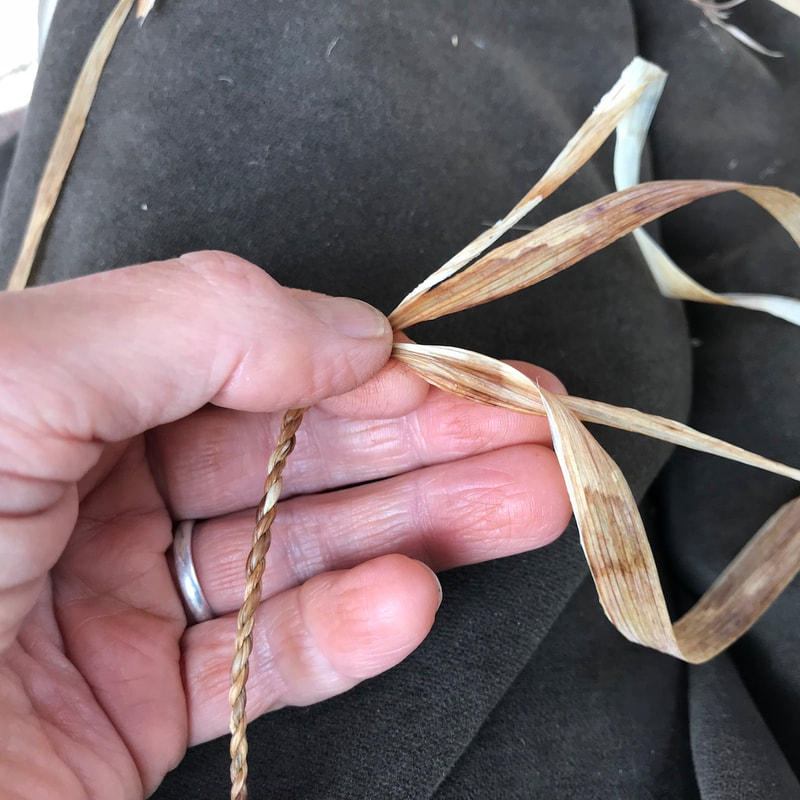They happen.
I call this one "material inquiry"
when I want to impress myself --
or use the other elegant phrases
I tried to conjure last week--
but while in its midst,
this infatuation mostly feels like joy.
I find it hard to know what to say here
except
"YAY"
and
"isn't it cool?"
But Thanks to Kate's query
in last week's comments
asking about the how of it all,
I'm determined to explain... something.
I am learning as I go
so my information has gaping holes
about which I know nothing,
and the things I do know
are somewhat situation specific.
Water, for instance.
Here in Idaho it is very dry right now
so I've found it necessary to soak the dry leaves
before splitting or twisting them into cordage
to prevent the strands from breaking.
A tub of water for a few hours works pretty well,
as does rolling in a wet towel overnight,
depending on character of the material.
A good soaking rain is great
(we had one once),
as the brown leaves around the edges of
iris and daylily plants can be twisted immediately.
is easy to weave with.
It packs in best
when going through a small section
of the open shed before packing
(one or two warps at a time instead of five or six
or, heaven forbid,
traveling selvedge to selvedge before packing).
If the cordage has had time to dry, however,
(about five seconds around here right now),
it needs to be soaked till pliable enough
to bend smoothly around the warp.
for too long in extra warm water
(cuz...tea... hot water in the kettle...),
said cordage may become over-saturated
and this may lead:
first --to lovely, easy weaving
second --to shrinkage as the cordage dries,
and a revision of her original vision
if she happens to have woven other elements
over the too wet cordage
using techniques/ materials that do not
want to slide down the warp
at the same rate as the cordage.
when trying to force things
in an attempt to avoid needle weaving
and vision adjustment
.
Luckily, I kinda like the wrecked house
and its new island location
so decided not to repair it.
likes all of it enough
to try other aqueous experiments,
for instance tossing a couple of rings of cordage
into a linen scouring bath
(linen skeins and washing soda
simmered for an hour+).

the cordage did not fall apart.
What it did do was grow plumply darker (dying itself?)
and develop a new character.
Wet, it felt a bit like holding
a string of dark brown pearls
and was lovely to weave--
when damp but no longer wet, that is.
Some lessons stick.
One person said the photo above looked like woven coffee beans.
the pearl/ coffee bean effect went away.
The cordage stayed quite dark,
and didn't exactly shrink as a whole,
but the character of the individual strands
ended up different from any cordage I've used so far,
wet or dry,
and the bit with which I didn't weave
went boing.
but rest assured that soon enough
it'll be damp once again
to see how it behaves, both off and on a loom.
Part of me wishes that I knew
what I don't yet know,
so I could figure out how
to learn whatever those things are
in an organized way.
But then again...
The mystery is better.
At least until I do learn a thing,
whereupon I'm sure to write about here
because
duh
I'm blabby that way
even when apparently speechless with delight.
What a plus to know
you're here with me.
Thanks.















